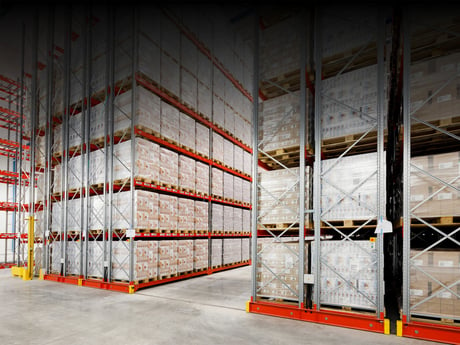- AJ Products UK
- Blog: Tips to Inspire Happiness at Work
- Buying guides
- Striking the right balance

Striking the right balance
Accumulation
See Totalisation.
Accuracy (a.k.a. Tolerance)
Degree to which a displayed measurement relates to its actual (true) value. All measuring devices have some degree of inaccuracy since infinite precision can never be achieved. Accuracy is usually stated as a percentage (either of full scale or of actual reading).
Analytical Balance
Electronic balance that measures to a very high degree of precision and accuracy, often with a draught shield to minimize disturbances to the weighing platform.
Animal Weighing
See Dynamic Weighing
Auto Off
Turns off a scale after a set period of inactivity, which may be set through menu options on a scale.
Automatic Tare
Tare function where the scale automatically records the tare weight based on the first item placed on the scale. May be set for a defined period of time.
Auto Zero Tracking (AZT)
Automatically maintains a balance of zero within a specified limit. Environmental conditions can cause the scale's display to drift. The auto zero feature helps to eliminate this problem and ensures that the scale is properly zeroed before each weighing.
Average Piece Weight (APW)
Average net weight of each piece in a sample, recorded by dividing the total net weight of all the pieces by the number of pieces. This feature works on the assumption that the parts being counted are all of uniform weight.
Bench Scale
Scale adapted for use on a counter or bench, often for industrial applications.
Calibration
Process of weighing a known mass on a scale, noting the discrepancy (if any) on the display and making the appropriate adjustments to ensure accuracy. How often to calibrate a scale is based on the harshness of the environment and the role of the scale: the more critical the scale or balance is to an operation, the more often it should be calibrated.
Capacity
Maximum weight measureable on a scale, when combined with a minimum load value (usually 0) this defines the scale's Weighing Range. It is a good idea to select a scale with slightly more capacity than you will need to avoid overloading. However, the higher the capacity, the lower the readability typically will be. Therefore, you should avoid selecting a scale with too much capacity.
Checkcounting
Counting products with checkweighing limits (such as filling boxes with a set range of parts per box).
Checkweighing
Verifying the weight of an object as it relates to a predetermined range (over, under or OK). Typically used for checking product weights for uniformity and ensuring equal portions of a product. Common applications include food and other packaging, filling and quality control checks.
Counting Scale
Scale used to weigh multiple objects of uniform weight and display a total piece count.
Crane Scale (a.k.a. Hanging Scale)
Any scale designed to be hung from an overhead support (or crane), and whose load-receiving element is suspended from the scale, usually designed for weighing heavy loads.
Differential Weighing
Automatically calculates the difference between two different weighing results.
Display Hold
Manually or automatically holds the last stable weight on the balance display. Ideal for weighing oversized objects that may obstruct the view of the displayed weight reading.
Draught Shield
Shield to minimize disturbances and prevent air currents from causing the balance pan to move, which would result in fluctuating readings. A draught shield with allow for a single constant reading.
Dynamic Weighing (a.k.a. Animal Weighing)
Weighing an object that is moving by taking average measurements over a set time to provide a stable result. Commonly used for pets and livestock; also suitable for weighing in unstable environments (such as ships).
Any platform scale designed for installation with the platform surface at or near floor level.
Graduation
Minimum unit of readability set by a scale.
Gross Weight
Total weight of the merchandise or goods including the container and wrapping (tare). Equal to Net Weight of the item plus the Tare Weight of the container.
HACCP Compliant
HACCP (Hazard Analysis and Critical Control Point) is a system that defines compliance with food handling regulations by helping food business operators look at how they handle food and introducing procedures to make sure the food produced is safe to eat.
Hanging Scale
See Crane Scale
Housing
Enclosure around the working mechanism of a scale or scale indicator.
Indicator
Device which indicates weight by converting the original weight signal to a form of display.
IP (International Protection) Rating
Rating for protection from outside objects like dust and water as defined by international standard IEC 60529. The first digit stands for the level of protection against solid objects (6 = totally protected against dust; on a scale of 0-6); the second digit shows level of protection against liquids (5 = protected against low pressure jets of water from all directions, limited ingress permitted, 6 = protected against strong jets of water, 7 = protected against the effects of temporary immersion between 15cm and 1m, duration of test 30 minutes; on a scale of 0-8).
In short, IP 65 is dust tight and protected from low pressure water jets. IP 66 is dust tight and protected from strong water jets. IP 67 is dust tight and protected against temporary water immersion. All scales with these ratings are wash down or can be used in a wet environment.
Library Memories
Memory designated for specific information on a number of items (SKU, Average Piece Weight, etc.).
Load
Weight or force applied to the load-receiving element.
Loadcell
Type of transducer that converts force into an electrical signal, which is then converted and adjusted to display a weight on an indicator.
Net Weight
Weight of an item without the weight of a container, box, or other packaging (tare).
Off Centre Loading (a.k.a. Eccentric loading or Shift test)
Ability to display the same value when a weight is placed anywhere on the weighing platform (rather than in the centre of the platform).
Overload
Load where the gross weight on the scale platform exceeds the capabilities of the scale. The safe overload capacity is the weight over which the scale will be damaged by the weight -- typically 150% of capacity.
Pan
In a small-capacity scale, a (usually) removable saucer-like load receiving element.
Parts Counting
Counting groups of a part by recording a net weight of the parts and dividing it by an Average Piece Weight. Common applications include packaging parts, inventory control and restocking parts bins.
Percent Weighing
Displaying a sample weight as a percentage of a pre-set total reference weight.
Platform
Horizontal and generally flat element of a scale, designed to act as the load receiving element.
Precision
Degree of agreement between repeated measurements of the same quantity.
Pre-set Tare Function
Tare function using a tare weight entered with a keypad or recalled from the memory.
Readability
The smallest difference in mass that can be displayed on a scale.
Repeatability (a.k.a. Reproducibility)
Ability to show consistent results under the same conditions. To determine a scale's repeatability, a test weight should be weighed ten or more times in a consistent manner. The higher the value, the greater the variance in results, and the less accurate the scale.
RS 232 Interface
Serial port used for data transmission to modems, printers, data storage, uninterruptible power supplies, etc.; replaced on many devices with the USB port.
Slotted Weight
Cylindrical weight with a radial slot for use on a counterbalance hanger.
Specific Gravity
Comparing the density of a mixture or solid against the same volume of water, expressed as either 1 (equal specific gravity to water), less than 1 (less dense than water) or greater than 1 (more dense).
Stability
Degree to which a measurement stays constant when subject to variation in external factors such as time, temperature and supply voltage.
Static Weighing
Weighing a non-moving object (as opposed to Dynamic Weighing).
Tare
To compensate for the tare weight of a container by setting the displayed weight to zero before weighing the container with its contents. This is used to remove the weight of any packing or containers so that only the weight of the goods within the container is shown. The Tare value is subtracted from the remaining weight that can be added to a scale. For example, if a scale has capacity of 500g and 200g is tared, the remaining capacity is 300g.
Tare Weight
Weight of the box or container used to weigh an item.
Tolerance
See Accuracy
Totalisation (a.k.a. Accumulation)
Accumulation of data for a set of measurements when weighing items one after the other. This mode can help avoid manual documentation and calculation errors as results can be printed or sent to a computer.
Underload
Scales are designed to display 0 with the weight of the platform and weighing frame on the load cell. Underload occurs when the weighing platform (or frame) is removed or mechanically affected so that the load of the platform is not on the load cell, causing the scales to become inaccurate.
Weigh Below (a.k.a Weigh Below Hook or Weigh Below Balance)
Attachment point on the bottom of the scale, which allows for weighing below the balance, usually on a hook.
Weighing Unit
Unit in which the weight of an unknown mass is displayed. The most common weighing units are Avoirdupois (lb, oz, tons, grains, pennyweights, troy ounces, carats) and Metric (kg, g, mg, metric tonnes). For certain applications, a custom unit defined by the user may be required. Many scales allow for the user to select the appropriate unit from a pre-set range (which may include custom units).
Zero
Setting the gross weight displayed on a scale to zero, with the zeroing range defined by internal software and Auto-Zero Tracking (AZT).



